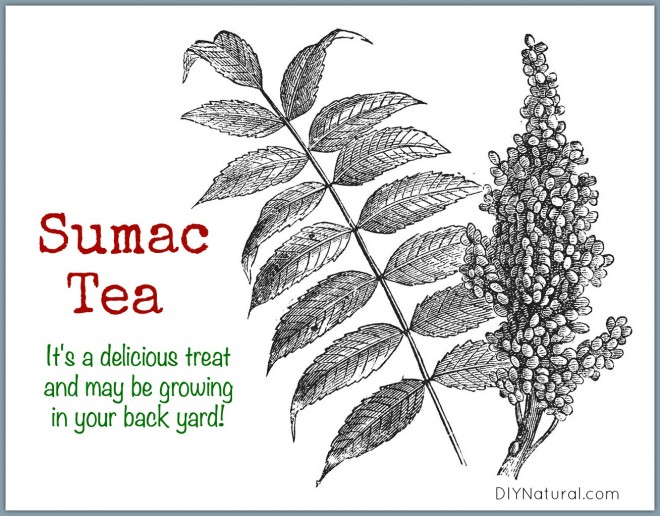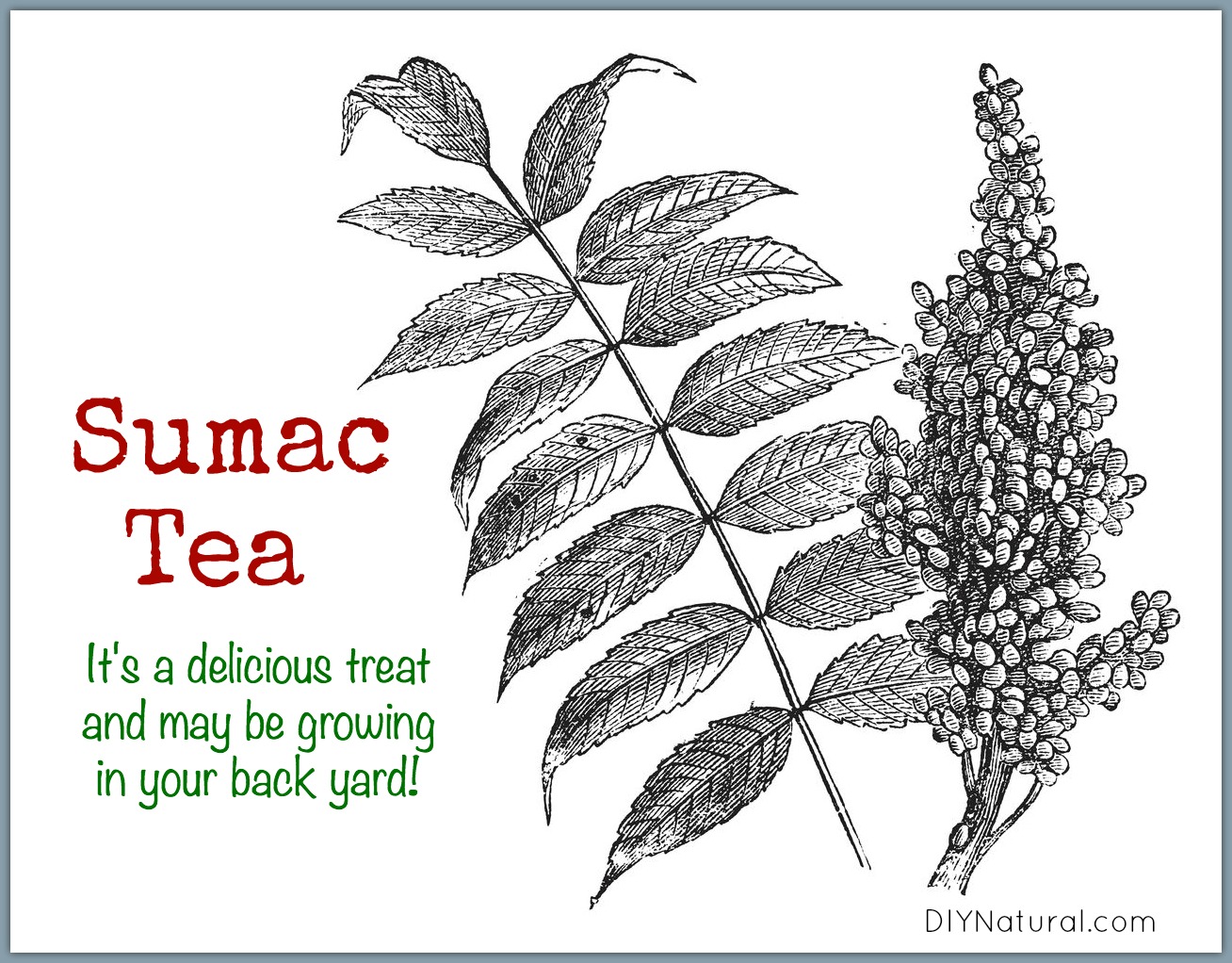
Yesterday one of my students arrived for class with a gallon of freshly made sumac lemonade. I didn’t get a chance to taste any during class, which I took as a sign that it was good since everyone else drank it up before I could get to it. Luckily for me, there was another jar hidden away and as the last car pulled out of the driveway I was sipping a glass with my feet up.
What is sumac?
There will be many of you who are already familiar with sumac and those of you who aren’t probably know the plant, though you think you don’t. As we drive along on the highway at this time of year, sumac (Rhus spp., namely Rhus glabra) is the wispy leaved, leggy shrub growing in large clumps with the red pointy mass held up above its green heads. These shrubs are quickly turning a brilliant red. They are truly one of the show-stoppers of fall ranging from brilliant shades of orange to fiery red.
But isn’t sumac poisonous?
As I sipped I wondered how many people still know all that the sumac plant has to offer. So often I hear the common misconception that they are poisonous. There is indeed a poisonous sumac (Toxicodendron vernix) in the family, but it isn’t closely enough related to really get it confused. Poisonous sumac has white berries and the sumacs in the Rhus genus have red. Further, this family is where we find poison ivy (Toxicodendron radicans) and poison oak (Toxicodendron diversilobum). Perhaps it is this fear that the common sumacs we find in wild areas might be poisonous that has allowed this amazing plant to fall out of favor.
Benefits of Sumac
The sumac tea or sumac lemonade I am drinking is a traditional beverage in the south. It was used to cool the body in extreme heat. The Native Americans and those in the Middle East have a long history of using the plant. We don’t have much recorded in Europe because sumacs weren’t native there.
Traditionally, both the bark and the berries have been used in medicine. Overall, the plant is highly astringent, an ability that explains its use in drying up any situation in the body that involves excess “liquid.” Most amazing is its use in supporting a healthy urinary tract and blood sugar level in the face of a diabetes diagnosis. It makes me wonder, with such a prevalence of diabetes in the American south, if this traditional drink has been set aside to our detriment.
The plants are high in tannic acid, which is what makes them astringent. It is also what makes the sumac an excellent dye with a rich history of use in both the leather and wool industry here in the US. Because of the levels of tannic acid, sumac doesn’t need anything to “fix” it and make it remain in the material to be dyed. The colors tend to range from mahogany to black, sometimes even a shocking yellow in the case of leather.
I love looking at the sumac and so we planted a group of them on the property this year. They aren’t quite as common where I live since we are in the middle of farmland that has been relatively open for too long. When I get closer to wooded areas I begin to see them much more frequently at the edges of the roads just out of the shade of the trees.
I thought that since it is the season to get out there an experience the sumac I would pass on the traditional recipe for making a delicious lemonade. Be sure to only collect red sumac berries. They should be hairy if you’re picking them properly when it hasn’t rained for about a week.
Delicious Homemade Sumac Tea
Ingredients
- large handful of fresh sumac berries
- cold water
Directions
Rub the berries between your hands, lightly bruising them as you drop them into a glass or stainless steel container. Cover with cold water and allow to sit about an hour. Everything I read suggests that your tea will taste the best if you allow it to steep in the fridge. When the tea is ready, strain it through a very fine seive or several layers of cheesecloth. Be sure to remove any hairs or solids that may irritate digestion. Serve and enjoy!
Do you have access to sumac? Have you ever used it for anything? If so, please share in the comments!
*******




Hi,in middle east, we use sumac as spice ,when we have BBQ .try it you will enjoy the taste
Dawn,
I have been meaning to do this for a few years! I will collect some and finally give it a try. Just a thought- Since sumac works so well as a fabric and wool dye, how do you think it would do as a natural alternative to hair dye? Thanks for the article!
Love sumacade!
I have dyed wool and silk with sumac berries (Rhus typhina), and gotten a tannish yellow (with alum mordant) and a lovely soft grey (with iron mordant).
Yes! One of my students told me that she makes the lemonade and pours it into ice cube trays. This allows her to add a pinch of sumac tea to other drinks in the winter. Love it!
Hi can you dry the berries or the leaves to enjoy over the winter ?